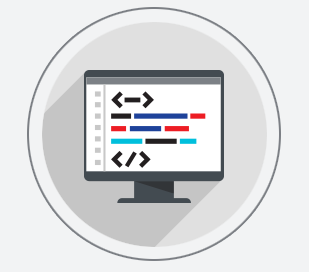When you’re participating in a hackathon, 24 hours is very little time to define a problem, come up with a solution, and translate it into a well-designed prototype. This is why preparation dramatically increases the odds of winning a hackathon. So use your time wisely!
Tips for Preparation
 At most hackathons, you’re not allowed to push any code before the hackathon starts, but there are plenty of things you can do to optimize your time on-site.
At most hackathons, you’re not allowed to push any code before the hackathon starts, but there are plenty of things you can do to optimize your time on-site.
There are two important questions to ask yourself as you prepare:
- What problem will you work on and how will you solve it?
- What’s the pitch you will present to the judges?
In addition, there are two things you can do to save time and make your life easier once it’s time to start developing your solution and prototype:
- Learn the technology ahead of time
- Make mockups and wireframes up front
5 Steps to Victory
The following five steps will also help you prepare for your hackathon and guide you to ultimate victory.
Step 1: Focus on a single problem
The technology is actually the easy part of winning a hackathon. 90 percent of your task is to ruthlessly reduce the challenge down to one fundamental problem and find a solution. To inspire a focused mindset, remember the following equation and make it your mantra:
An idea = A well-defined problem + How you will solve it.
Products for business are one thing. Products that are good for hackathons push the envelope with innovation and ingenuity. While you need to focus on a single problem, don’t limit your imagination or creativity. The sky is the limit, so inspire your judges with new ideas that take their technologies and solutions to entirely new places.
Step 2: Refine your message
What is the critical message you want to convey to your judging panel? How can you deliver that message in a simple and impactful way?
You have very little time to code and pitch, so don’t waste it creating or demonstrating login screens or other extraneous elements. Get right to the point and focus only on the elements that contribute to your pitch.
Consider the example of Steve Jobs’ introduction of the Apple iPhone. You can check out the video below:
In announcing one of the most revolutionary products in the history of technology, Jobs never showed the iPhone, a screenshot, or any other device. Instead, he focused on getting his point across with a simple animation of a cube that turns.
It’s more powerful to focus on your idea and convey the critical message rather than try to impress judges with anything else. You are not pitching a startup but one killer feature or solution that solves a problem.
So the key is to ask yourself one big question: What is the CORE of your problem and the CORE of your solution? That should be your guide in how to present it to your judges.
Step 3: Hack the clock
With just 24 hours available, you have to make the most of your time. So follow these do’s and don’ts to stay on track:
Do’s
- Focus on the MVP: Minimum Viable Product
- Break down your work into possible versions. Focus first on version 1 and note any other components you might want to incorporate in version 2 or 3 if you end up with extra time on your hands.
- If the rules permit, work on your app design before the hackathon. Judges tend to be more appreciative of attractive apps, so it’s worth investing some time in this area.
- Use frameworks and libraries. Depending on the rules of your hackathon, you may not be able to write code ahead of time, but you can use existing open-source libraries. Study the available libraries and APIs in advance. Find and choose trusted libraries that are actively being developed and have good documentation. Install them and run tests so you know they work. Many hackathons will allow you to use pre-made wireframes or mock-ups. So make sure to take advantage of these and use them in advance, so you don’t end up spending time doing it during the hackathon.
- Focus on the judging criteria: judges have score cards, so keep them in mind. Whatever the criteria may be for your hackathon, keep them at the forefront of everything you do. Make sure to focus on how your solution and prototype will score against those criteria.
Don’ts
- It bears repeating. Don’t waste time creating login screens, confirmation pages, thank-you pages, footers, social buttons, or anything else unnecessary.
- Don’t write beautiful code: You don’t have the luxury to fix indentation or otherwise make things look pretty.
- Don’t waste time looking for perfect data sets. Fake the parts that aren’t mission critical and focus on conveying the message.
Step 4: Practice your Pitch
You get 24 hours in a hackathon but only a couple of minutes to present your work.
Don’t let all the effort be wasted by presenting a bad pitch. Take enough time to practice your pitch and prepare for potential questions from the judges. A dedicated person from the team should practice non-stop in the final hours before judging. When it’s time to deliver your pitch, this person should field all the judges’ questions.
Step 5: Have Fun!
A hackathon is a competition and a big potential opportunity for you to learn something new, but remember to have fun! Don’t put pressure on yourself, get stressed out, or worry about the results if you don’t accomplish your objective or win. A hackathon is a tremendous learning experience, and it’s a great chance to experiment and meet interesting people. Have the best time you can, make your best effort, and take away all the positives you can from the entire experience.
Hopefully this blog post has provided you with useful tips to help you prepare for your next hackathon. Attending our Hackathon at Money20/20 this year? Don’t forget to visit our event page for more details on our challenge to see how you can develop a new in-store, online or mobile commerce experience.










